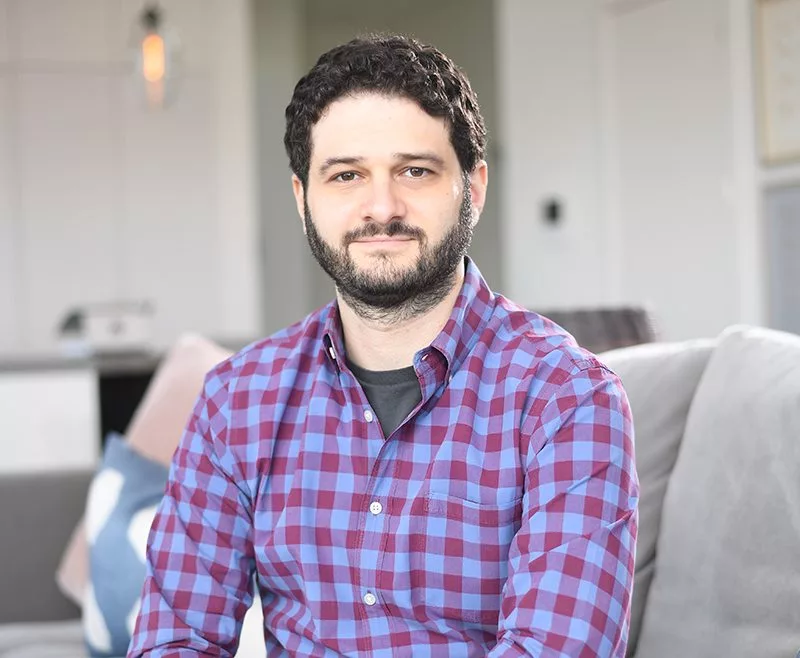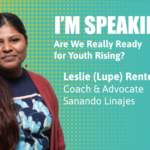A lot of Silicon Valley tech companies have great perks and treat their employees well. But not many give as much care to designing their workplace culture as the do to designing their software. It’s that intentionality that sets San Francisco productivity software maker Asana apart. For the full scoop on what makes Asana’s culture so special, check out our November/December 2017 cover feature on the company. Hint: it’s just not the fancy cafeteria.
Meanwhile, as part of our reporting we sat down with the company’s CEO and co-founder Dustin Moskovitz, who was also one of the co-founders of Facebook. Here’s a condensed version of our conversation about workplace culture, leadership, and more.
What you are most proud of having achieved at Asana so far?
Dustin Moskovitz: That the culture is reflective of our intention, particularly in things like mindfulness, equanimity, and a collaborative, non-combative conversational style. At the meetings I’m in this week, I see a lot of very competent people who are aligned on what the higher goals are, aligned on the ways of talking about the tactics, and generally able to have a productive conversation about a complex set of ideas and not just have that be a battle of wills and egos. Seeing that scale all the way up to the 250 or 260 Asanas we have now, I’m proud of setting that intention and feeling like we did it.
What makes a good leader?
DM: You have to balance a lot of somewhat competing ideas. For example, you have to both be open to different ways of thinking about things and also decisive.
There’s a phrase we use here often: “Strong opinions weakly held.” I’m always trying to question what I think I’m right about and how the opposite of that story might be true. But to have the team move in a unified direction, I have to express what I think I’m right about at that moment and carry on going in that direction until something convinces me that I’m not.
Similarly, I have to make clear decisions and mediate conflicts while also building trust and making sure that people feel heard. We’re very careful here not to do decisions by consensus, but you need to still make sure that the decision is communicated clearly, which sometimes means being open to feedback before the decision is made. But more importantly, it means being clear about the details. “We’re going this way. This is why. Here’s some of the tradeoffs we considered. Here are some other ways this decision might have gone.” It’s important for building trust. Giving them more information helps them understand the full story. I often end up in these interactions where it’s like, “Okay, I hear you. I know you feel strongly about this and we’re doing the opposite of what you want.” It’s a good work skill. Not all leaders do it well
I want to dig in a little about you and Justin Rosenstein as co-founders and partners. What was the moment when you knew, “Yeah, I want to start a company with this guy”?
DM: The moment thing is a little backwards, because we decided to start a company to do Asana . We were collaborating on an internal tool inside Facebook. A lot of founders start as like, “Oh, you’d be a good co-founder. Let’s think of an idea,” and I don’t think of the decision that way with Justin. It was more like, “We’re doing this idea. You’re clearly the person I’ve been working on it with. Let’s go.”
So you already had experience working with him on something that was much lower stakes than starting your company together?
DM: Yeah, exactly.
What do you value about him? Why are you good partners?
DM: Together we make one great leader. We have a lot of complementary skill sets. We were joking the other day that he’s the “Chief Yes Officer” and I’m “C-E-NO.” He said my superpower was looking forward to see how things will go wrong, which is true. He’ll often come up with this great grand vision, and I’m like, “Well, it’s going to be really expensive. There’s a 90 percent chance it won’t work and we’ll have lost all this time.” Whereas he’s much more of the visionary and creative, asking what could go right. This is our basic dynamic.
I always say if you started a company with just Justin, it would keep burning way too much cash going after this crazy, exciting vision but may never actually launch. And if you started a company with me, it would be very efficient but maybe never become a very big idea.
We push each other to be better. He keeps me from being boxed in in my thinking and is very good at challenging assumptions and making sure that we’re not being overly conservative, not saying no to too many things. And I keep him grounded.
How do you understand your job here? You just talked about that a little bit, C-E-NO. But maybe another way to put that is, what are your Areas Of Responsibility (AORs)?
DM: I have exactly one AOR right now. I’m really excited about it. We call it “the meta-AOR of the white space.” Basically, we try to define every responsibility in the company and delegate those to other people, but then there are a bunch of other things that come up that I either have to figure out who to delegate to or make the decision directly.
That’s a pretty unusual way of framing a CEO’s responsibilities. Can you talk about that a little bit, about how you’ve come to that?
DM: We have this mindset of distributed responsibilities, so it almost feels like a failure if I’m doing something directly or making a decision directly. In fact, I just added a quote to our database from our head of product management: “Sure, Dustin is technically the CEO, but I can’t even remember the last time he actually made a real decision.” There was one decision recently that I did make, and she was like, “before that, I can’t remember when.”
Of the company’s many values, what would you say you value most?
DM: Mindfulness is definitely up there. It has a lot of facets like equanimity and chillness.
And then also integrity. There are a lot of decisions that are hard but I have a principle lens: “Can I live with this decision later?” And sometimes that’s about how you communicate about it and approach it and how transparent you are. And sometimes it’s about how exactly a decision gets made.
I also think leverage is of value. Particularly in philanthropy , a lot of what we’re trying to do is go after the most important work regardless of the category, and we’re very quantitative about it. The same is true of Asana. That’s why we have “focus on mission” as one of the values. It’s meant to be a stand-in for: when in doubt, do the thing that helps the company succeed most in the long run.
When you look back on your path to a company that is so mission-focused, what feels like the biggest turning point?
DM: I tend to think of Facebook as more mission-driven than a lot of people do. The idea of just staying there and building that was very enticing. I already had a lot of money, so it was important that whatever we might do next needed to be at least as good on the mission dimension, because the marginal dollar I might earn is just not going to be that rewarding.
It sounds like even at Facebook the mission was part of what appealed to you.
DM: In 2007, 2008, there were some pretty big moments for Facebook. One was the No Mas FARC rallies , which were organized through newsfeed. And then later the Arab Spring was the same. It was very tangible to employees inside the company. “We’ve built this massive tool for social change.”
What would be your call to action to other CEOs or leaders in tech or just in business in general?
DM: I wish they were more intentional on a lot of dimensions. One of the things I think is unique about Asana, which has made us successful building this culture, is just that we tried. Most companies start entirely focused on the product, and then if they’re still around three or four years later, it’s common, literally, to have them be like, “Okay, we should write down our values.” We did that in the first week or two.
When you do it four years in, you’re really more of an anthropologist than an architect. You end up with these lowest-common-denominator things. I think Ben Horowitz has this quote that after the first year, the book of culture is written and unchangeable. That’s not literally true, but there’s a lot of truth to it.
So: thinking about that stuff earlier and thinking about the mission you choose. It’s definitely a rising tide, but ten years ago, it was much more financially-oriented and there are a lot of companies that you might even characterize as exploitative in terms of how they make their money, like addictive games that are in some cases even getting little kids to spend their parents’ money. Entrepreneurs today have a lot of power to build things that will have a lot of impact on the world, and so choosing how to use that power is an important step for what’s going to happen later.
Are there any resources — books, podcasts, etc. — that you are super on about right now, especially for other people in mission-oriented business?
DM: “The 15 Commitments of Conscious Leadership” and the Conscious Leadership Group. I’m a big fan of Jack Kornfield. I recently did an online meditation course he did with Tara Brach that I thought was pretty good. I both like and dislike Arianna Huffington’s recent book, “The Sleep Revolution.” I’m really into self-care, and there are some good practical tips in there.
What are your top self-care practices that you really commit to and don’t go without?
DM: Making space for rest. Making space for breaks during the day and making space on the weekends. I try not to open Asana or send messages to anyone, and I feel like that’s pretty pervasive in the company. I’m always surprised, I have very few inbox notifications waiting for me on Monday. And I even try to be good about when I stop using social media and stuff.
I try to make space to be present and engaged with work when I’m engaging with work and engage with rest when I’m engaging with rest. And then take vacations, longer vacations when I can. Things like that. I think the most popular post on our blog is this graphic I designed called the work-rest fractal, this idea that you need to alternate work and rest at every level.
Anything I didn’t ask you about that you want to make sure to tell us?
DM: I would just point out the importance of clarity in our workplace, too. We have the concept of clarity of purpose and responsibility. Purpose is basically the mission, but also has different levels of granularity: what is your particular purpose in the company?
It’s helpful for people to be effective and for the company to be effective when all that stuff is clearly articulated. I think a lot of the politics in companies, for example, is the lack of a system like areas of responsibilities. There’s always room for more clarity, but making it much clearer, “This is your role, this is where you have decision rights, this is how your role interacts with other roles.” When you map that out for people, there’s less room for them to argue about it in the moment a conflict comes up.
I also want to make sure it’s clear that all of the company design and culture design stuff for us is still in service of the mission and delivering a great product and service to users. I coined this term this week: “the warm soft pursuit of profit.” Like the “cold hard pursuit” but there’s no reason it has to be like that.
In practice a lot of companies are doing themselves a disservice where they’re working their employees really hard and exhausting them and they think they’re getting more hours and face time out of them but they’re not actually getting more work. It’s known through research that people slow down when they’re being asked to work too many hours a week. We’re trying to take that information at face value and design an environment where people can actually work optimally and thrive.
What is giving you hope?
DM: I do think there is a rising tide of companies that are mission-driven, and also employees who want to work for that kind of company. There are enough that are more mature now that you can have your cake and eat it too — work at a place that has a good culture, has a good mission, and you can have a pretty good financial return. And that’s just raising the bar on everyone else.
There’s definitely a rising tide of mindfulness, too. I always speculate that’s partially about the co-location of Silicon Valley and that California culture, but that’s a reason to be hopeful.




